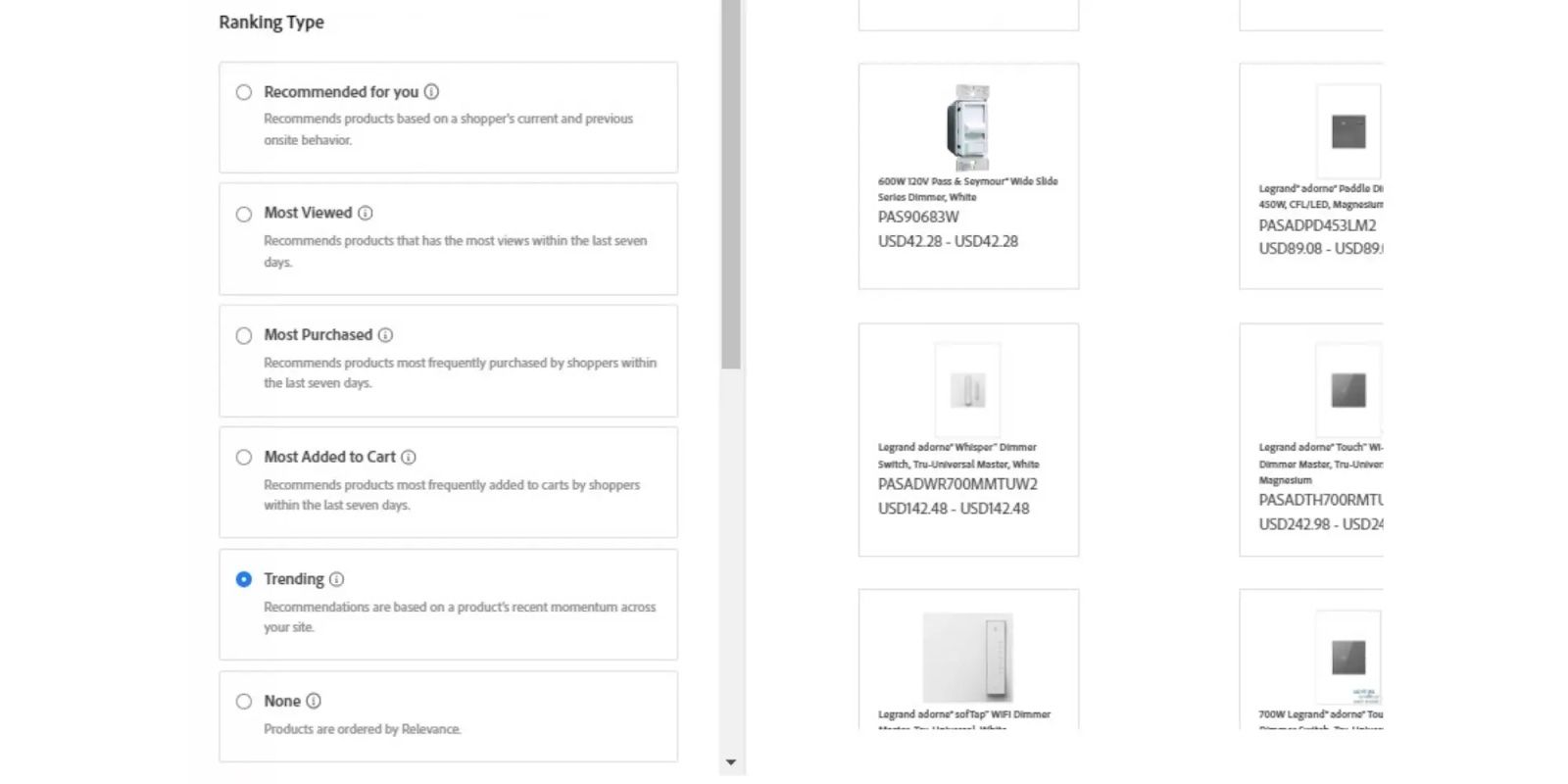
Adobe Announcements: Firefly AI & much much more!

AI-optimized Live Search Results
- Recommended for You
- Trending
- Most Purchased

Faster Live Search Setup and Performance
Thanks to a new storefront widget, customers can now configure and launch a complete search interface and product listing page that will load not one, not two, not three, but five times faster. These increased load times are possible since all queries will be routed to Adobe’s search service for processing. In addition, the widget improves overall performance by removing the search traffic load from the site. Learn more about the Live Search widget here.Advanced Segmentation and Targeting
Another new extension, Audience Activation, is changing the game! If you are looking to deliver real-time, one-to-one personalized experiences to your customers, you’ll want to take a mental note. With this update, your team can now use audiences created in Real-Time CDP to target content (dynamic blocks) and promotions (cart price rules) in Adobe Commerce. For example, a merchant can highlight a 20% off promotion on high-margin accessories to customers with a high propensity to purchase discounted add-ons. This deep integration enables more sophisticated personalization strategies that leverage data from the commerce site and other sources — like ERP and CRM systems — and AI-powered segmentation tools unique to Real-Time CDP. Learn more about the Audience Activation here.High-intent Data Sharing
The surge in online interactions since the start of the pandemic has raised buyers’ expectations. Most expect businesses to tailor every interaction to their needs and preferences. To meet these demands, Adobe released a new update to the Experience Platform connected for Adobe Commerce, better known as Data Connection. This release will empower businesses to build rich customer profiles, including back-office order status information, and help to deliver personalized commerce journeys. This powerful native integration goes above and beyond the traditional storefront behavior monitoring and gives marketers access to the data they need to fuel more personalized, relevant, and timely messages, as well as power in-context promotions or content to each prospect or customer. For example, an order canceled due to a supply chain issue can trigger a customer notification with a substitution offer and special discount. The same data can also be used to understand the impact of cancellations on customer lifetime value. For B2B customers, Data Connection also shares information when requisition lists are created, and products are added or removed from lists. Learn more about Adobe Commerce data sharing capabilities here.Payment Services for UK and France
Payment services for Adobe Commerce give merchants the simplicity of a unified platform, making it easier to securely manage transactions and order data from every storefront in one place – your eCommerce dashboard. Now available in the UK and France, Payment Services provides payment options, easy onboarding, and comprehensive customer reporting in multiple markets. Offering this level of payment options is another important way to make your customer’s shopping experience more seamless for better results. Learn more about payment services here.New Catalog Service Capabilities
Enhancements to Catalog Service for Adobe Commerce now allow customers to retrieve category data and individual product details, which speeds up the time required to render category menus and trees on any page. Merchants can also request specific layers of the category tree to show only relevant data to the shopper.Bringing it All Together
If this announcement proves anything, it’s that the Adobe Commerce platform is not only continuously growing in its offering and abilities, but it’s also increasing in complexity, which can feel overwhelming for eCommerce managers and teams. That’s where we come in. If you want to learn more about these new features or simply want to make the most of your current site, schedule a call with one of our Dev team members today. Stay tuned for more information on Firefly release notes and how Adobe Commerce can continue helping you and your brand succeed.Drop Us a Line At:
Phone (USA): (513) 469-3362
4665 Cornell Rd. Suite 255
Cincinnati, OH 45241



















